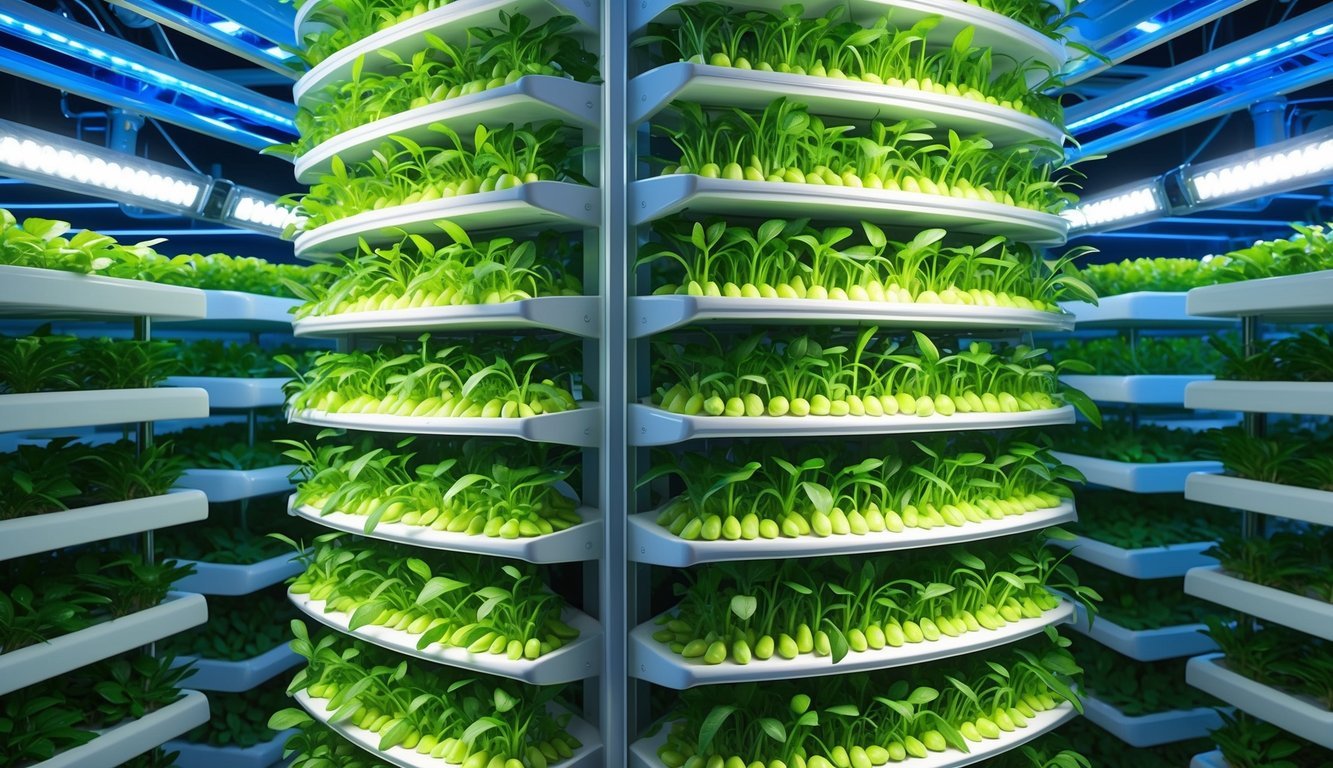
Researchers Isabella Righini and Luuk Graamans, hailing from the Greenhouse Horticulture department at Wageningen University & Research, recently delved into the potential of vertical farming in the ongoing global shift towards alternative protein sources.
Technological Advancements in Vertical Farming
During their engaging discussion, Graamans and Righini highlighted the latest technological advancements that promise to enable precise management of protein levels across different crops. Their analysis points to vertical farming as a sustainable solution to meet the rising global demand for protein, aligning agricultural practices with future food requirements.
The conversation zeroed in on the cultivation of protein-rich crops within vertical farming systems. Given the surging consumer interest in various protein alternatives to reduce dependence on traditional meat and dairy products, the researchers underscored the importance of enhancing these crops. This trend is part of a broader movement towards dietary diversification and a passionate effort to mitigate the environmental footprint of food production.
Focus on Legumes and Edamame
This transition towards alternative protein sources is particularly strong in Western countries with mature economies. Legumes like peas and faba beans have historically served as vital protein sources in Europe, but their growth in Northern Europe is limited by the region’s climate, resulting in short growing seasons. Factors such as unpredictable weather and pest infestations can lead to unstable yields and variable crop quality.
Among the legumes, the researchers decided to focus on edamame due to its high protein content, exceptional nutritional quality, and versatility as a fresh product.
Exploring the impact of vertical farming on this global protein transition, the researchers articulated the benefits of these systems over traditional agricultural methods. They suggested that instead of serving as a primary production source, vertical farms should act as research hubs dedicated to the development of high-protein crops. Their work aims to optimize edamame cultivation in various scenarios, such as open fields or greenhouses.
Advancements and Future Prospects
Harnessing Controlled Environment Agriculture (CEA) techniques, Righini and Graamans seek to modernize how protein crops are produced, allowing meticulous management of both the root zone and the aerial climate. The controlled settings of vertical farms and greenhouses enable precise monitoring of growing conditions, significantly improving yield predictability and overall crop quality. Additionally, these environments allow for extended production seasons, enabling off-season and continuous cultivation.
Vertical farming stands out for its closed-loop systems, which provide comprehensive control over production climates and resource allocations. The researchers concentrated their studies on optimizing energy use in relation to crop yield and protein levels, experimenting with various temperature settings, light durations, and light spectrums.
When it comes to selecting suitable protein-rich crops for controlled cultivation, Righini and Graamans pointed out that the high energy demands of vertical farming make high-value products crucial to offset operational costs. This focus generally excludes low-value grains and dried legumes. Fresh products, particularly edamame, emerge as attractive options due to their market appeal.
Their research spotlighted soybeans (Glycine max), known for their remarkable protein concentration and quality. The researchers noted that a variety of soybean cultivars can be tailored to fit diverse production systems, catering to both fresh consumption and fermented products.
Additionally, they discussed how varying environmental conditions within vertical farms could influence the protein content and quality of crops. Past research has shown that factors like air temperature can significantly affect protein concentration. While this wasn’t the main focus of their study, their findings indicated that cultivar variations played a more prominent role in influencing seed yield and protein levels than the specific environmental conditions tested in their experiments.
Looking ahead, both Righini and Graamans envision advances in research and technology that could enable real-time monitoring and management of protein content in crops grown in controlled settings. They are exploring innovative approaches that employ spectral imaging technology for non-invasive, timely assessments of protein levels within individual beans still growing on the plant.
This cutting-edge imaging technique could open doors to targeted climate control strategies, as further detailed in an article led by researcher Selwin Hageraats.
Through their pioneering efforts, the team at Wageningen University & Research is investigating how vertical farming could play a transformative role in advancing sustainable protein production, ensuring that we meet the nutritional needs of an ever-evolving global population.
Source: Vegconomist

